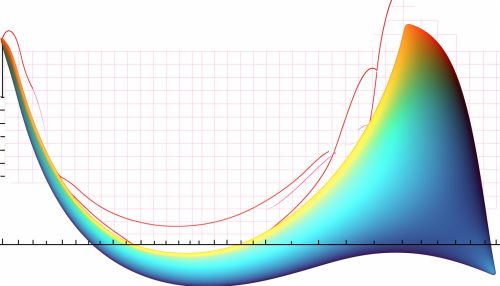Quintic function
Definition
A quintic function is a function of the form f(x) = ax^5 + bx^4 + cx^3 + dx^2 + ex + f, where a, b, c, d, e, and f are constants and a ≠ 0. The quintic is a polynomial function of degree 5, and the term "quintic" comes from the Latin "quintus" meaning "fifth".


Properties
Quintic functions have various properties that make them unique among polynomial functions. These properties include the number and nature of their roots, their end behavior, and their graph's shape.
Roots
The roots of a quintic function are the solutions to the equation f(x) = 0. A quintic function can have up to five roots, which may be real or complex. The Fundamental Theorem of Algebra guarantees that every quintic equation has exactly five roots, counting multiplicity and including complex roots.
End Behavior
The end behavior of a quintic function depends on the sign of the leading coefficient, a. If a > 0, the function approaches positive infinity as x approaches positive or negative infinity. If a < 0, the function approaches negative infinity as x approaches positive or negative infinity.
Graph
The graph of a quintic function can have a variety of shapes, depending on the coefficients a, b, c, d, e, and f. However, all quintic function graphs have at most four turning points and three inflection points.
Solving Quintic Equations
Solving quintic equations can be more complex than solving lower-degree polynomial equations. While there are general formulas for solving quadratic, cubic, and quartic equations, no general formula involving only arithmetic operations and radicals exists for solving quintic equations. This is a result of the Abel-Ruffini theorem, which states that the general quintic equation cannot be solved by radicals.
However, certain types of quintic equations can be solved using special methods. For example, Bring-Jerrard quintic equations, which are of the form x^5 + px + q = 0, can be solved using Bring radicals.
Applications
Quintic functions have applications in various fields of science and engineering. For example, in physics, they can be used to model certain types of motion. In computer graphics, quintic Bézier curves are used for complex shape design. In control theory, quintic polynomials are often used to generate smooth trajectories.
